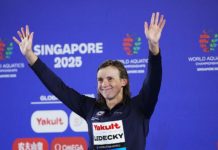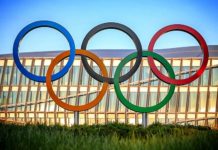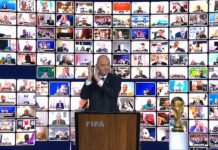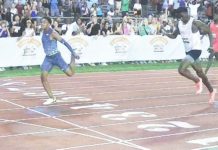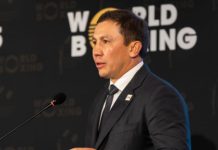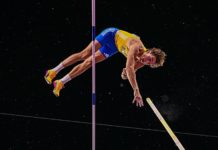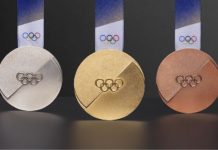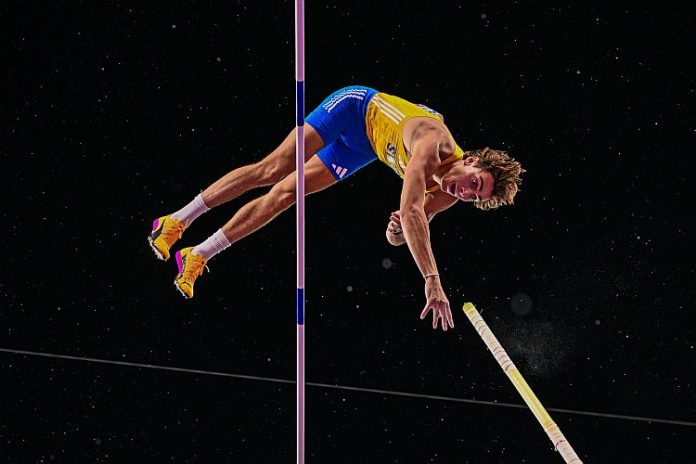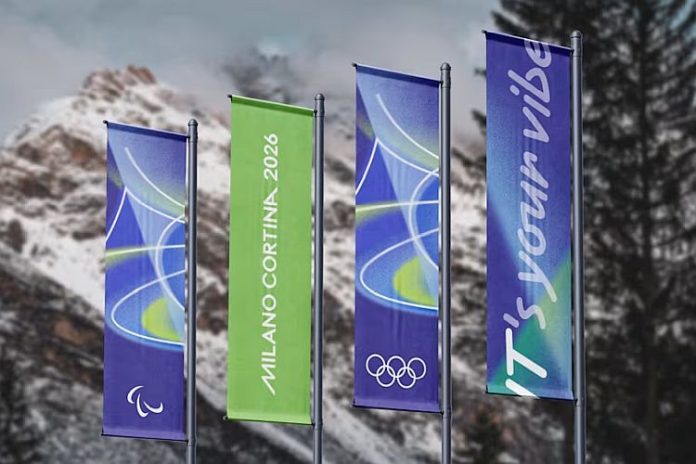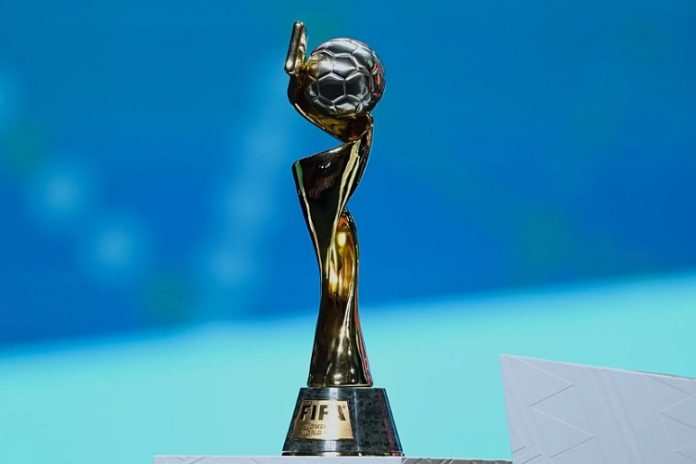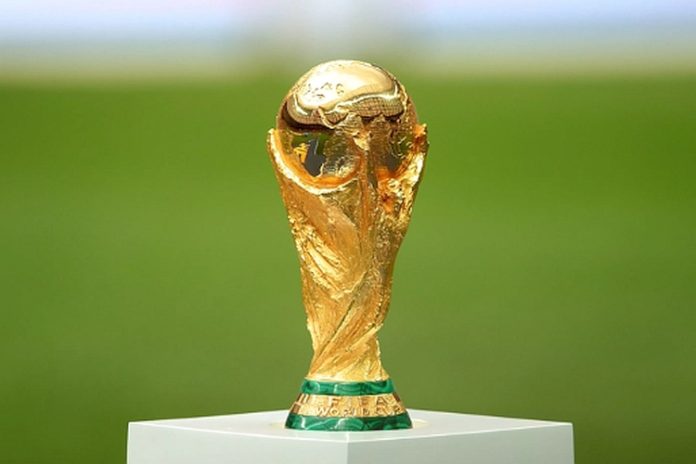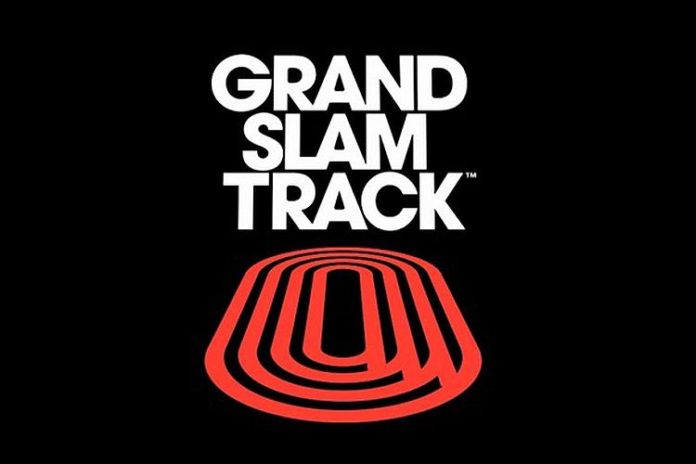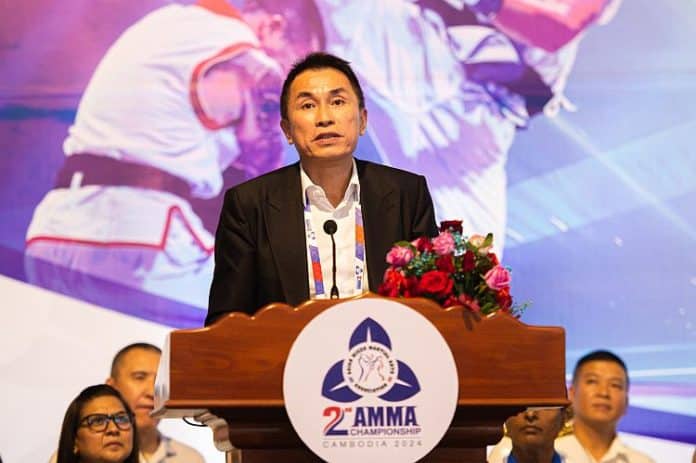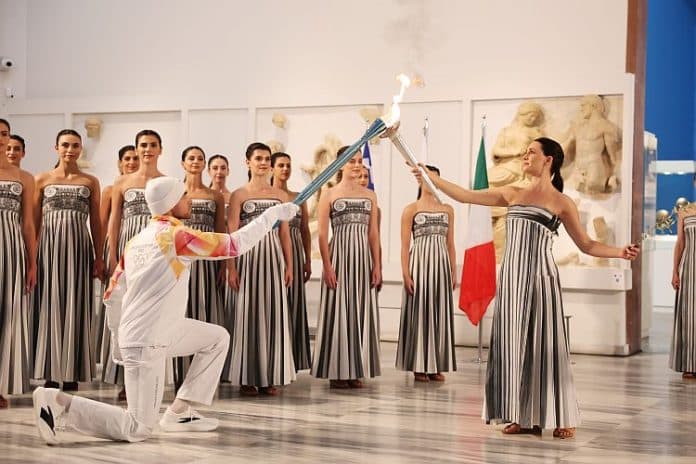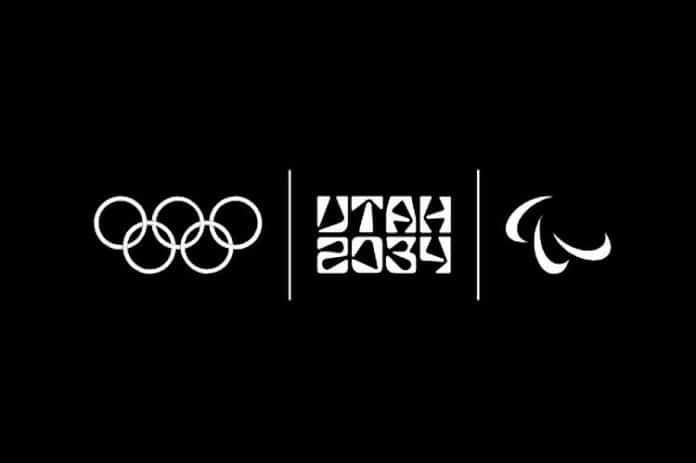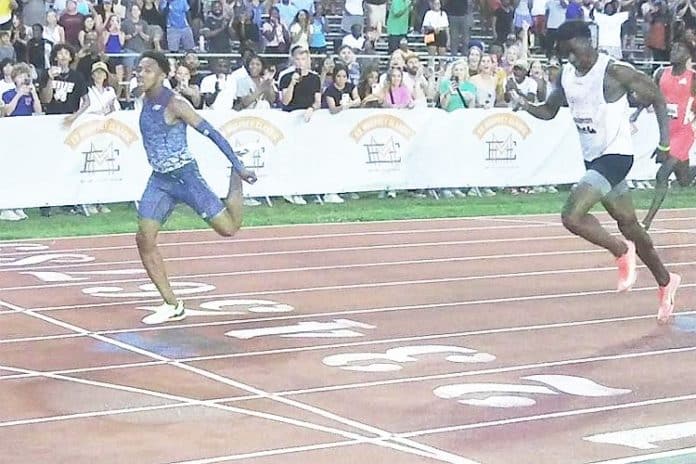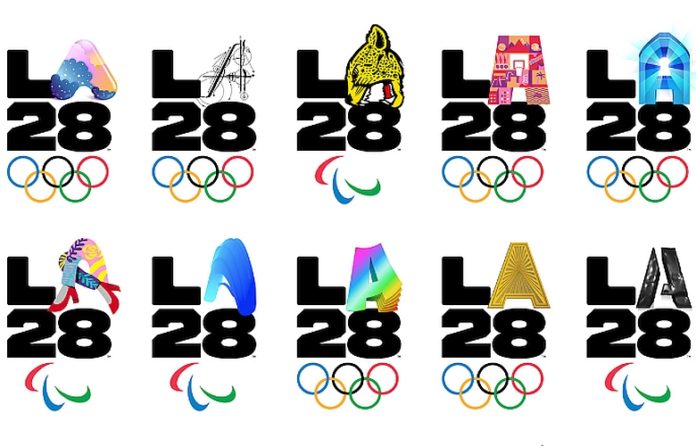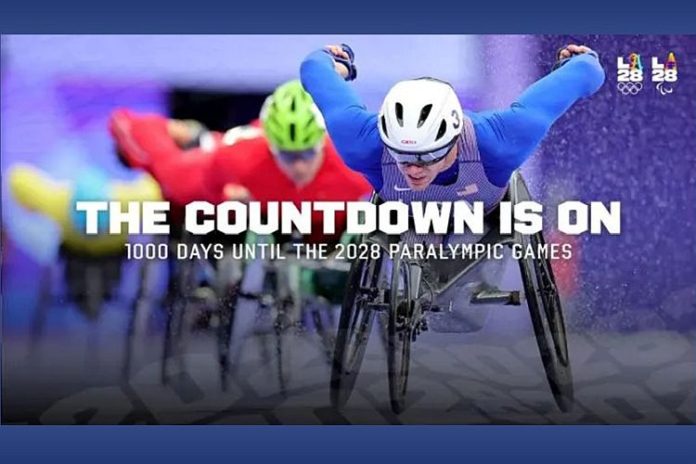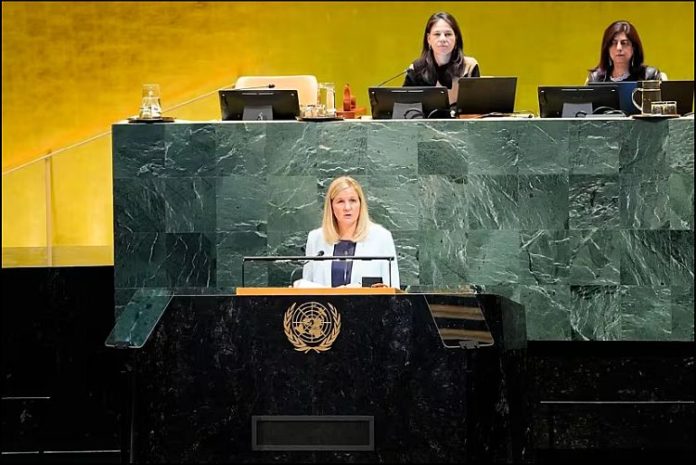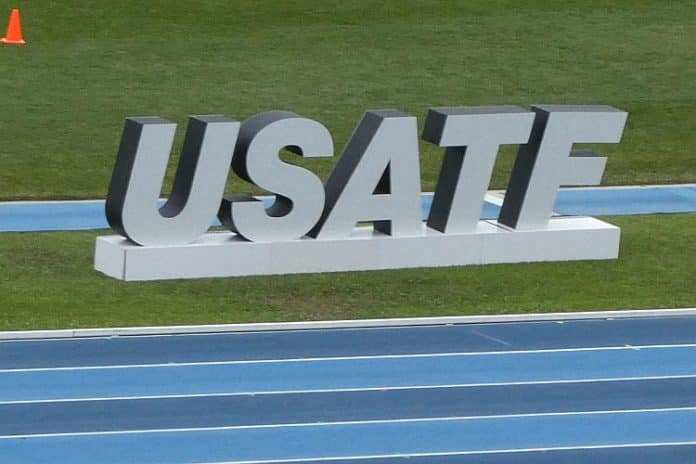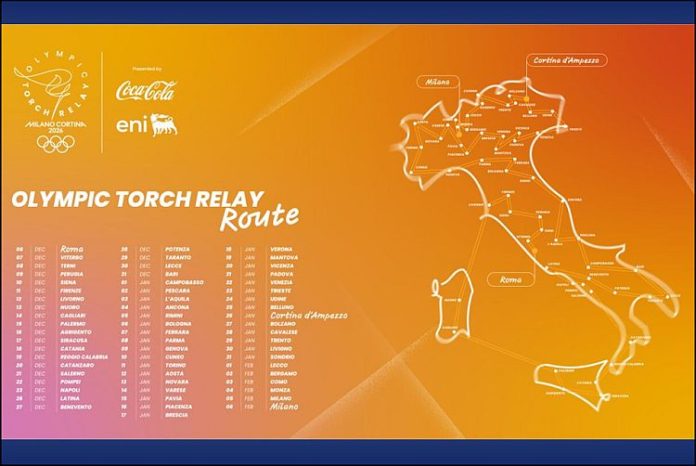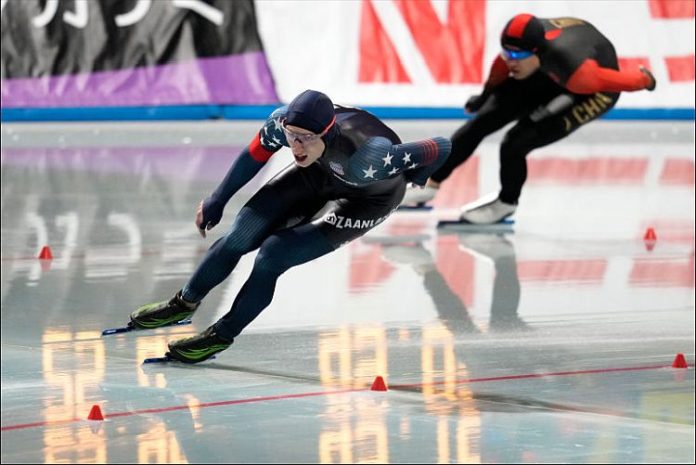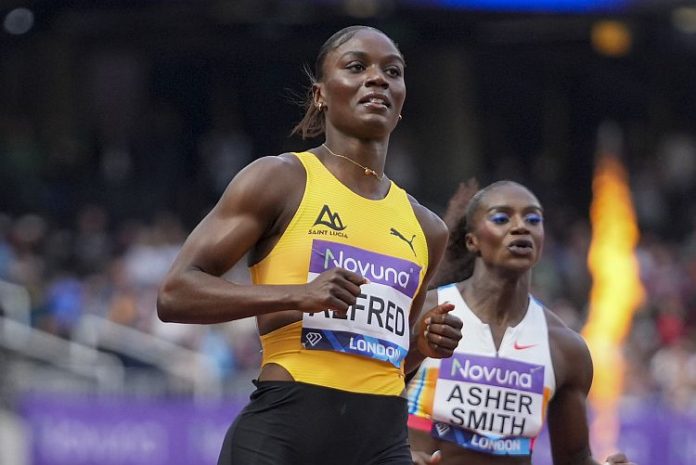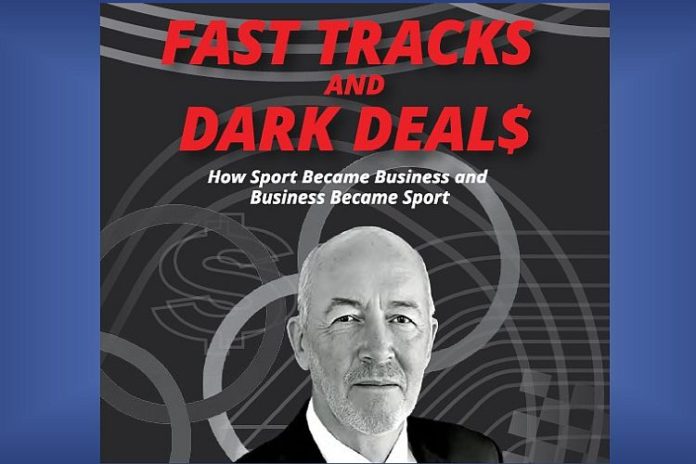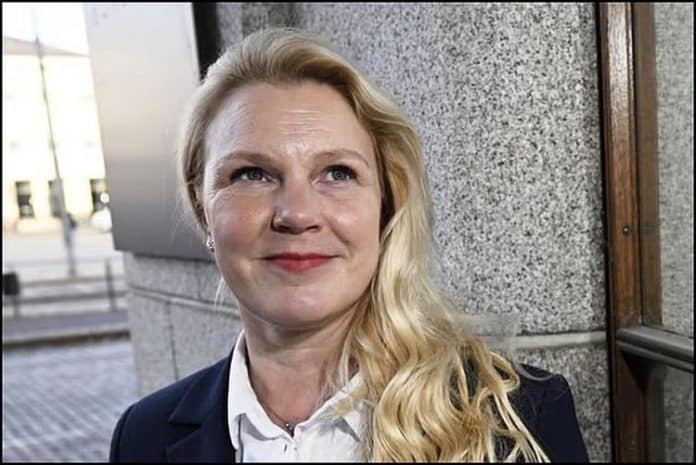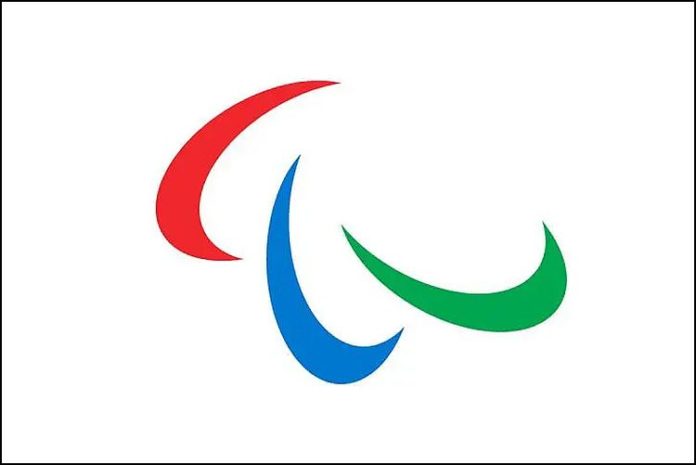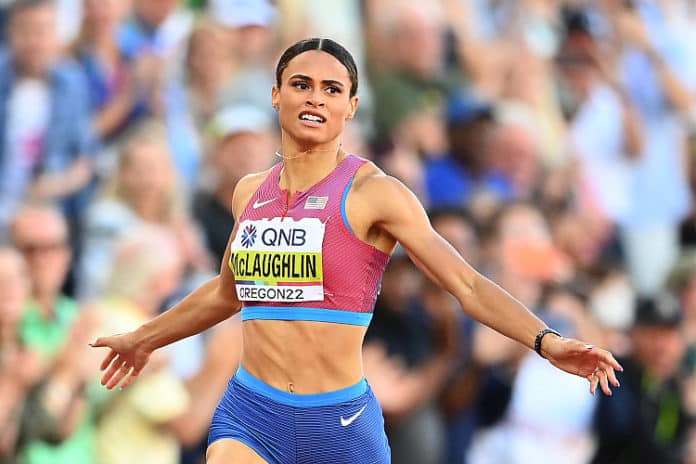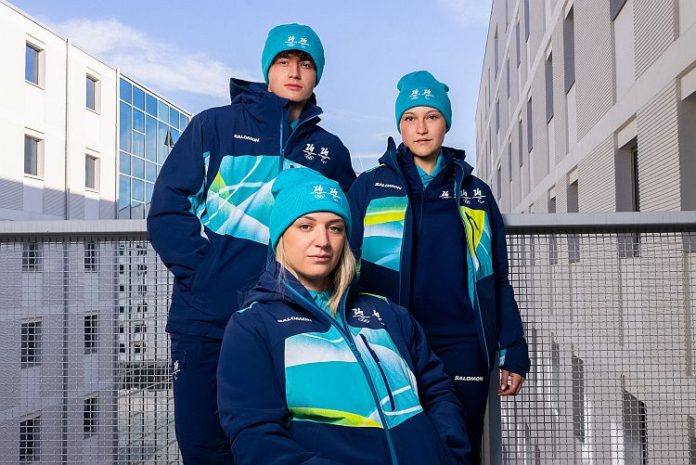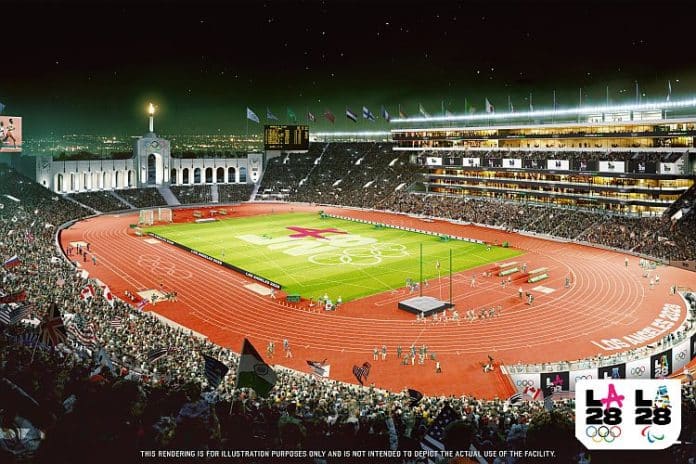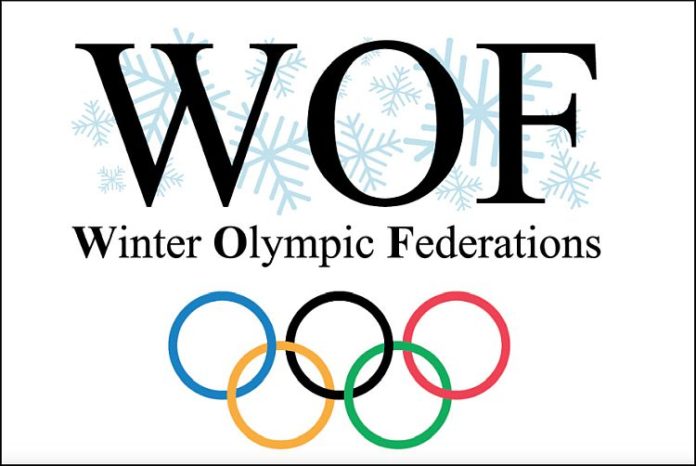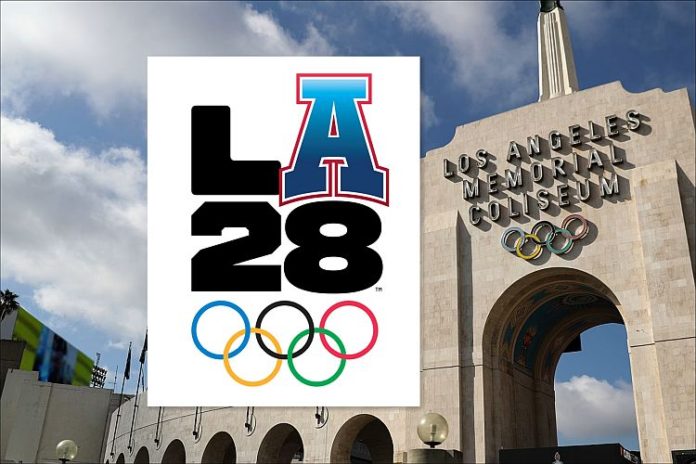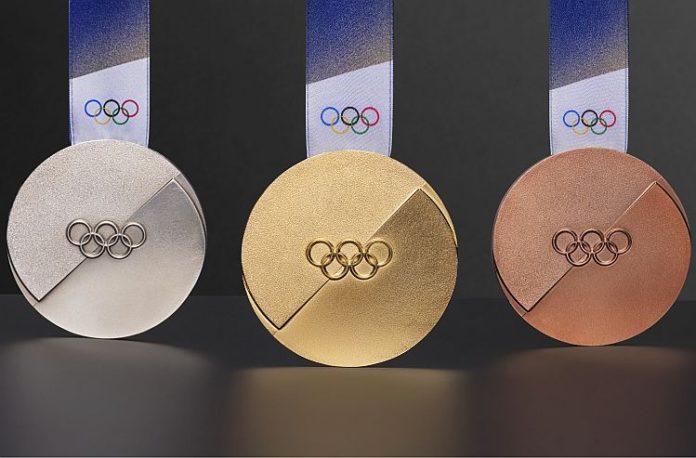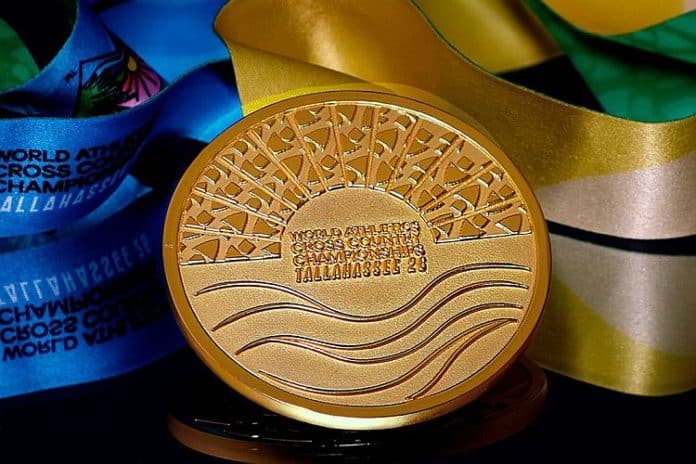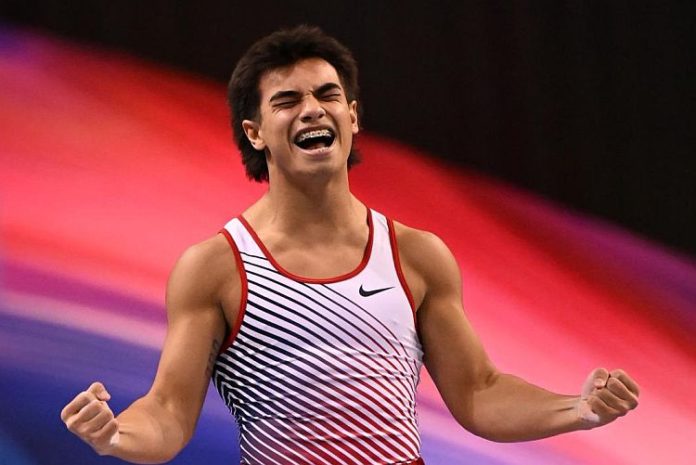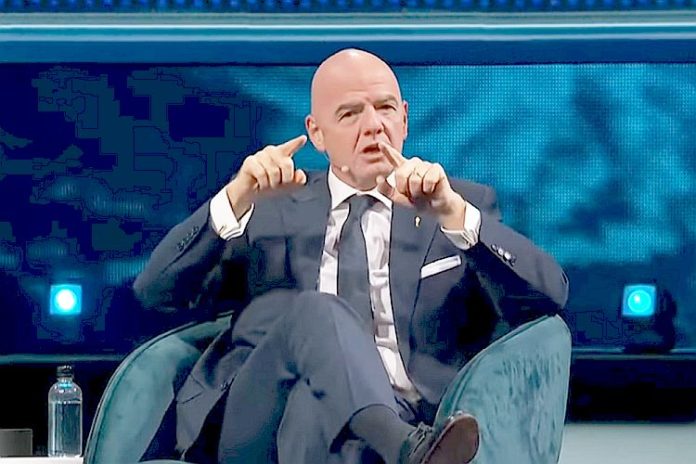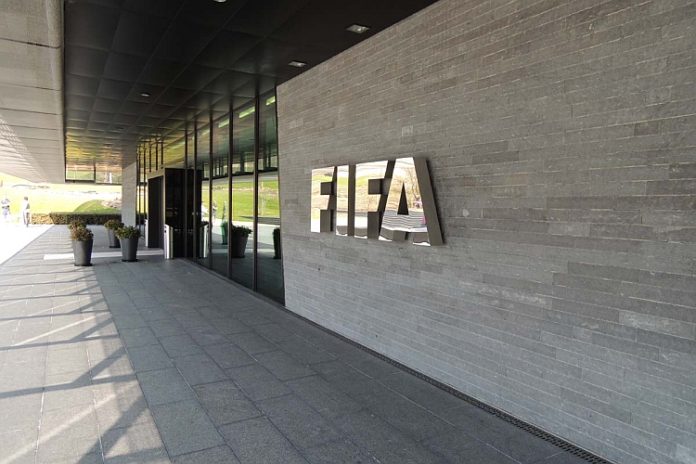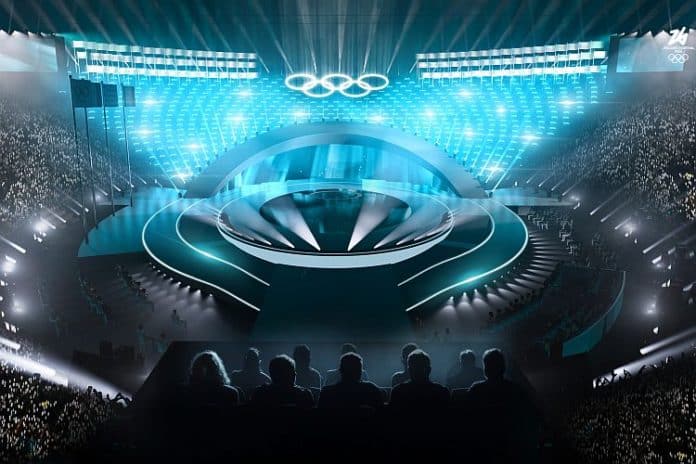★ The Sports Examiner: Chronicling the key competitive, economic and political forces shaping elite sport and the Olympic Movement.★
★ To get the daily Sports Examiner Recap by e-mail: sign up here! ★
≡ THE 5-RING CIRCUS ≡
● Olympic Winter Games 2026: Milan Cortina ● All of the worry about construction was supposed to be on the now-completed sliding track in Cortina, but it’s the privately-funded Palaitalia Santagiulia arena which is running late.
Milan Cortina 2026 organizing committee Games operations officer Andrea Francisi told The Associated Press:
“There is no Plan B. So necessarily we have to be able to organize the competition in an impeccable manner at Santagiulia.
“There are daily updates in the sense that our team is there working every day. The companies which are involved with the building of the facility have sped up their work significantly.
“We’re monitoring all that daily together with them, there’s great collaboration between us, we’re creating a coordinated plan between their work and our preparations and for the moment we’re healthily optimistic, but 100% we’ll do it.”
¶
Another construction delay has organizers limiting ticket sales for women’s alpine skiing in Cortina, with the Apollonio-Socrepes gondola behind schedule. It is slated to carry spectators up to the Tofane Alpine Skiing center for the women’s skiing.
For now, a 15% reduction in the tickets available for these events has been instituted. The gondola system is meant to carry 2,400 people per hour, using 50 10-passenger cars, reducing the need for buses. The project is being overseen by the Italian government construction oversight agency Simico, which believes it will be completed in time for the Games, which start on 6 February 2026.
● Alpine Skiing ● Rising American star Lauren Macuga, 23, the 2025 Worlds Super-G bronze medalist, is out for the season after tearing her anterior cruciate ligament in her right leg in a training crash in Copper Mountain, Colorado.
She posted on Instagram, “It’s me, I’m what’s broken RIP acl, see you all next year.”
In addition to her Worlds bronze in 2025, Macuga was also fifth in the Downhill and won a gold and silver on the World Cup circuit.
● Athletics ● The Times (London) reported that World Athletics has rejected the Grand Slam Track request to settle its debts for 50 cents on the dollar and has said that the circuit must make good on what it owes its participating athletes.
The story explained that a bankruptcy law firm had contacted creditors and that if (1) creditors did not agree to the half-owed deal, Grand Slam Track would file for bankruptcy, and (2) that “an outside party” was interested in acquiring the circuit, but only if debt-free.
World Athletics is reported to be owed about £30,000 for licensing rights (about $39,705 U.S.).
● Gymnastics ● Following on the permission of the International Gymnastics Federation (FIG) to allow Russian and Belarusian “neutral” participation, the European Gymnastics Union voted on Friday, 27-19, to allow “neutral” entries from the same countries in its events.
● Shooting ● Karoliina Nissinen (FIN), who lost to Russian Alexander Ratner in the late-October election for the presidency of the European Shooting Confederation, has formally asked the International Shooting Sport Federation for a suspension of the election results and of Ratner himself. In a new statement, she explained:
“This was not a free election: it was orchestrated by a single financier and a single candidate. The future of European shooting sport – and the credibility of the ISSF – depend on an independent and thorough investigation.”
She has charged that (1) “The election was chaired by a person who was not lawfully appointed by the General Assembly; voting secrecy was allegedly compromised; and selective remote access reportedly prevented several member federations from fully participating”; (2) “Sanctioned Russian oligarch [and former ISSF President] Vladimir Lisin allegedly pledged €200,000 per federation in exchange for electoral support, exerting undue financial influence on the vote“; (3) “Russian candidate Ratner was permitted to run for ESC President despite Russia’s continued suspension, raising significant compliance and governance concerns,” and (4) “Candidates were reportedly subjected to intimidation, harassment, and discriminatory treatment throughout the electoral process.”
≡ RESULTS ≡
● Alpine Skiing ● The World Championships women’s Giant Slalom silver medalist in 2025, New Zealander Alice Robinson underlined once again that she is an Olympic medal contender at the FIS World Cup at Copper Mountain, Colorado.
On Saturday, she claimed her fifth career World Cup gold – all in the Giant Slalom – by leading after the first run and then winning the second run as well to finish at 1:58.91. Austria’s Julia Scheib moved up from third after the first run to second in 1:59.87 and Thea St. Jernesund (NOR: 1:59.99) took third. Nina O’Brien was the top American, in 11th (2:00.75) and Mikaela Shiffrin was 14th (2:00.99).
Sunday’s Slalom saw U.S. superstar Shiffrin lead five-time Olympic medal winner, Swiss Wendy Holdener, 52.94 to 53.22 after the first run, and had the second-fastest second run to win easily with a combined 1:48.75. German Lena Duerr moved up from ninth after the first run to get second (1:50.32) and rising star Lara Colturi (ALB) was third at 1:50.60, as Holdener faded to fourth.
American Paula Moltzan finished eighth in 1:51.10. It’s win no. 104 for Shiffrin, who has now won all three Slaloms this season, with Colturi finishing 2-2-3.
In the men’s Giant Slalom on Friday, Austria’s Stefan Brennsteiner, 34, got his first career World Cup gold, leading the first run and holding on for a 2:30.98 total, 0.95 ahead of Norway’s Henrik Kristoffersen (2:31.93) and Filip Zubcic (CRO: 2:31.98). River Radamus was the American, in 15th.
● Athletics ● Kenyan star Brigid Kosgei, the former world-record holder, won Sunday’s Shanghai Marathon in 2:16:36, the no. 4 performance of 2025. She led from the start and broke away from Irine Cheptai (KEN) after 30 km and won easily in her third-fastest marathon ever.
Cheptai was second in 2:18:51 with Ethiopia’s Tiruye Mesfin third in 2:20.38.
Ethiopia’s Milkesa Mengesha won the men’s race in 2:06.25 in a final dash over countryman Dawit Wolde (2:06.27).
● Badminton ● At the BWF World Tour Modi India Int’l in Lucknow, Hong Kong’s Jason Gunawan won the men’s Singles with an upset over fifth-seed Srikanth Kidambi (IND), 21-16, 8-21, 22-20, while fifth-seed Hina Akechi (JPN) won the women’s final over no. 4 Neslihan Arin (TUR), 21-16, 21-14.
Malaysia won the men’s Doubles, home favorite India took the women’s Doubles and Indonesia captured the Mixed Doubles final.
● Basketball ● The FIBA men’s 2027 World Cup qualifying in the Americas has begun and the U.S. team of G League players and free agents started with a 102-67 win at Nicaragua on Friday. The Americans had a 59-38 lead at half and never looked back. Forward MarJon Beauchamp led the U.S. with 24 points.
The second game with Nicaragua will be in Atlanta on Monday.
● Biathlon ● The first of two weeks of the IBU World Cup in Oestersund (SWE) started with relays over the weekend. France won the season’s opening race, the 4×6 km in 1:11:17.9 over Italy (1:11:31.7) and the Czech Republic (1:11:48.7), with the U.S. (Chloe Levins, Deedra Irwin, Luci Anderson, Margie Freed) in 16th (1:16:18.1).
The men’s 4×7.5 km was a clear win for Norway (1:11:10.1) ahead of France (1:11:25.4) and Sweden (1:11:34.8). The U.S. was a very commendable fifth, with Paul Schommer, Maxime Germain, Campbell Wright and Sean Doherty (1:12:35.1).
On Sunday, the Single Mixed Relay saw Sebastian Samuelsson and Ella Halvarsson post a decisive win for Sweden, 35:12.1 to 35:31.2 over Norway; the U.S. pair of Schommer and Freed were 18th (38:43.1). The 4 x 6 km Mixed Relay was a clear win for France (1:05:16.5) over Italy (1:05:41.7) and Norway (1:06.21.8). The U.S. was sixth (1:07:10.5) Germain, Wright, Levins and Irwin.
● Bobsled ● American Kaysha Love, the 2025 World Champion, moved up from second at the first IBSF World Cup of the season last week to win on Saturday in Innsbruck (AUT), beating Two-Woman Olympic champ Laura Nolte (GER), 1:52.02 to 1:52.19, with German Lisa Buckwitz, the 2018 Two-Woman Olympic winner (1:52.33) in third.
Americans Elana Meyers Taylor (1:52.80) and 2022 Monobob Olympic winner Kaillie Armbruster Humphries (1:52.82) went 8-9.
In the Two-Woman racing, Nolte (and Deborah Levi) and Love (with Sylvia Hoffman) went 1-2 in 1:47.51 and 1:47.92; Americans Armbruster Humphries (with Jasmine Jones: 1:48.07) and Meyers Taylor (with Azaria Hill: 1:48.28) went 4-6.
The Two-Man was a second straight win for Johannes Lochner (GER, with Georg Fleischauer: 1:45.08) over Olympic champ Francesco Friedrich (GER, with Alexander Schaller: 1:45.13), and Adam Ammour (with Tim Becker: 1:45.89) competing the German sweep. Frank Del Duca and Boone Niederhofer finished fourth for the U.S. in 1:46.18.
Double Olympic champ Friedrich won the Four-Man in 1:43.68, with Lochner second (1:43.96) and Patrick Baumgartner (ITA: 1:44.15) in third. Kris Horn had the fastest U.S. sled, in eighth (1:44.30).
The Skeleton racing was canceled due to insufficient practice time on the newly refurbished track.
● Cross Country Skiing ● The FIS World Cup season began with the winter skiing festival in Ruka (FIN), with more Norwegian men’s wins and Swedish women’s wins.
On Friday, Marten Nyenget won the 10 km Classical over superstar Johannes Klaebo, 22:30.8 to 22:32.9 for a Norwegian 1-2, with Mike Vermeulen (AUT: 22:35.0) in third. Zak Ketterson was the top American, in 14th (23:07.0). Saturday’s Classical Sprint was Klaebo’s 99th career World Cup win, in 2:30.03 over teammates Erik Valnes (+1.21) and Ansgar Evensen (+2.28).
Norway finished its men’s sweep in the Sunday 20 km Freestyle Mass Start, with Harald Amundsen winning in 44:42.5, ahead of teammate Einar Hedegart (44:44.4). Ketterson finished ninth in 44:55.5.
The women’s 10 km Classical was a Swedish 1-3, with Frida Karlsson winning in 25:31.8, Heidi Weng (NOR: 25:42.3) second and Moa Ilar (NOR: 25:50.1) third. American Jessie Diggins, the defending World Cup champ, was fourth in 25:59.4.
Saturday’s Classical Sprint had two more Swedish medalists, but Norway’s Kristine Skistad was the winner in 2:53.22, ahead of Swedes Jonna Sundling (+0.20) and Maja Dahlqvist (+0.20). On Sunday, Sundling, the Olympic sprint champ in 2022, won the tight 20 km Freestyle Mass Start, ahead of Diggins, 50:24.9 to 50:27.2, with Weng third in 50:27.7.
● Cycling ● The third and final UCI BMX Freestyle World Cup for 2025 was in Sakai (JPN), with Jude Jones (GBR) winning a close final from teammate Jordan Clark, 94.74 to 93.24. American Nick Bruce, the 2019 Worlds bronze medalist, was third (91.40), just ahead of Olympic bronzer Anthony Jeanjean (FRA: 91.20).
Sixteen-year-old Miharu Ozawa (JPN) won the women’s final at 95.50, leading a 1-2 with 15-year-old Mio Yoshida (91.40). Australia’s 28-year-old Natalya Diehm got third (86.60).
● Football ● The U.S. women’s National Team got off to a fast start vs. Italy in Orlando, Florida on Friday, with forward Olivia Moultrie scoring in the second minute and then striker Catarina Macario added two second-half goals for a 3-0 victory.
Moultrie banged in a shot from the center of the box off a pass from forward Rose Lavelle for a 1-0 in the second minute, which held up as the halftime score. In the 64th, Macario smashed the ball into the far side of the Italian goal off a pass from midfielder Sam Coffey and then ended with a score from the right side of the goal off an assist from sub forward Lily Yohannes in the 76th for the 3-0 final.
Claudia Dickey got the shutout in goal for the U.S., which had 69% of possession and a 19-7 edge on shots. The U.S. and Italy will meet again on Monday in Ft. Lauderdale, Florida.
● Freestyle Skiing ● American Todd Podmilsak, 21, collected his first career FIS World Cup Big Air gold on Saturday in Secret Garden (CHN), scoring 185.50 to best Dylan Deschamps (CAN: 178.50) and 2025 World Champion Luca Harrington (NZL: 176.00).
It’s Podmilsak’s second World Cup medal ever; fellow American (and 2025 Worlds silver man) Mac Forehand was fourth, scoring 169.50.
Britain’s Kristy Muir won her second career World Cup gold in the women’s final at 174.50, with Naomi Urness (CAN: 165.75) second and Mengting Liu (CHN: 165.25) a close third.
● Judo ● At the IJF World Tour Abu Dhabi Grand Slam in Abu Dhabi (UAE), newly-reinstated Russia, along with Japan and Germany each won two classes as 11 different countries won golds and 26 won medals.
● Luge ● The new Olympic track at Cortina d’Ampezzo was the site for a test event over the weekend, ahead of February’s Winter Games, finishing a full week of international training.
Germany went 1-2 in the women’s Singles, with Merle Fraebel (1:45.770) and two-time World champ Julia Taubitz (1:45.865) finishing 1-2, and American Ashley Farquharson in fourth (1:46.208). In the Doubles, Dajana Eitberger and Magdalena Matschina (GER) in 1:46.415, ahead of Andrea Voetter and Marion Oberhofer (ITA: 1:46.469). The U.S. combo of Chevonne Forgan and Sophia Kirkby were fifth in 1:47.330 and Maya Chan and Sophia Gordon finished 10th (1:48.491).
In the men’s Doubles, German World Champions Hannes Orlamunder and Paul Gubitz won in 1:45.170, just ahead of Americans Marcus Mueller and Ansel Haugsjaa (1:45.404) – the 2023 World Junior Champions – in second. Teammates Dana Kellogg and Frank Ike placed 12th in 1:45.884.
Sunday’s men’s Singles saw 2023 World Champion Jonas Mueller (AUT) win in 1:46.364, just ahead of Latvia’s 2022 Olympic Team bronze winner Kristers Aparjods (1:46.537) and 2017 World Champion Wolfgang Kindl (AUT: 1:46.543). Jonathan Gustafson was the top American, in 14th (1:47.679).
Austria won the Team Relay in 3:42.536, with Germany second in 3:42.822; the U.S. was fifth in 3:43.527.
● Nordic Combined ● The FIS World Cup season opener in Ruka (FIN) saw a familiar winner in 2021 World Cup champ Johannes Lamparter (AUT) taking the Compact 142 m jump and 7.5 km race at 17:38.2, followed by veteran Julian Schmid (GER: 17:45.9) and home favorite Ilkka Herola (FIN: 17:55.2). Ben Loomis was the top American, in 26th (19:16.9).
Saturday’s Gundersen 142 m hill/10 km race was another win for Lamparter in 24:04.7, with Schmid well behind in second at 24:37.4. Sunday’s event, with a 10 km Mass Start, had to be canceled when high winds preventing the jumping from taking place.
● Rugby Sevens ● The HSBC Sevens Series season opened in Dubai (UAE), with France and New Zealand winning the men’s pools and Australia and New Zealand topping the women’s pool groups.
Both the men’s and women’s finals ended with Australia-New Zealand matches in the finals. The Kiwis won both, triumphing by 26-22 in the men’s match and 29-14 in the women.
Fiji took third place in the men’s tournament, defeating France by 24-7 in the bronze match. Japan won the women’s bronze, 22-12, against Fiji.
● Short Track ● The 2025 ISU World Tour finished with the fourth stage in Dordrecht (NED), with Canada continuing to dominate, but also a surprise win for the U.S.
Four-time Worlds gold medalist William Dandjinou won the men’s 1,500 m on Saturday in 2:16.600, ahead of teammate Felix Roussel (2:16.670) and not only won his seventh individual World Tour race, but locked up the overall men’s seasonal title as well.
The surprise came in the men’s 500 m, where American Andrew Heo, 24, won his first-ever World Tour medal, a gold in 42.012, as Canadian star Steven Dubois crossed first but was disqualified! Dandjinou was advanced to second in 42.136. Heo had finished 14-14-89 in the three other World Tour 500 m races, but now he’s a winner:
“Starting from sixth, I just tried to get in a good position, because I knew they were going to fight. I was trying to take advantage, and I was able to execute. It’s my first medal, and for it to be gold is amazing, and it’s good momentum going into the Games. They’re stepping stones – lots of little wins, and this is a big win.”
The men’s 1,000 m went to Korea’s Jung-un Rim in 1:25.877, ahead of China’s 2025 Worlds bronze winner Shaoang Liu (1:26.023). The Netherlands won the men’s 5,000 m relay in 6:48.679, ahead of China (6:48.724).
The women’s racing saw two more win for Canada, specifically for 11-time Worlds medal winner Courtney Sauralt, who won the 1,000 m in 1:27.701 ahead of American Corinne Stoddard (1:27.752) and the 500 m in 42.695, with Stoddard second again at 42.999.
Korea’s World Champion Gil-li Kim won the women’s 1,500 m in 2:26.306 with Sauralt second in 2:26.443 and Stoddard fifth in 2:45.319. The Dutch won the 3,000 m relay in 4:07.916, beating Italy (4:08.127) and the U.S. (4:08.154).
The Mixed Relay also went to The Netherlands in 2:37.430 with the U.S. second in 2:37.947.
Dandjinou took the men’s seasonal title with 876 points over Italian Pietro Sighel (664) and teammate Dubois (590). Sauralt won the women’s seasonal title with 980 points, to 830 for Stoddard.
● Skateboard ● The World Skate Tour: Street was in Kitakyushu (JPN), with a sweep for the hosts, as Sora Shirai scored 90.50 on his last run to win with 170.27 points over countryman Kairi Netsuke (169.78). Japan went 1-2 in the women’s final, with Ibuki Matsumoto needing an 87.25 final run to get past teammate Oda Yumeka, 160.51 to 160.29.
● Ski Jumping ● The FIS women’s World Cup was in Falun (SWE) for two events, with Japan’s Nozomi Maruyama getting her third straight win to open the season, scoring 229.6 points off the 95 m hill. Slovenia’s double 2025 World Champion Nika Prevc was second at 211.1 and Lisa Eder (AUT: 209.3) third.
Before this season, Maruyama, 27, had three career World Cup medals (0-2-1); now she has three golds in a row!
On Sunday, Prevc got her first win of the season at 252.3 points, with Maruyama second at 244.4 and Eirin Kvandal (NOR: 234.4) third.
¶
Two-time Worlds Team gold medalist Anze Lanisek (SLO) got his second straight FIS men’s World Cup victory in Ruka (FIN), on the 142 m hill, after winds shortened the event to one round. He scored 141.0 points to win over Ren Nikaido (JPN: 136.4) and fellow Slovenian Domen Prevc (128.0).
Sunday’s jumping was canceled due to high winds.
● Snowboard ● The first of three straight FIS World Cups to start the season in China was the Big Air in Secret Garden (CHN), with the home fans cheering a 1-2 finish in the men’s final, with 2022 Olympic champion Yiming Su (174.50) and Chunyu Ge (159.50). Americans Brooklyn Depriest (152.25) and Justus Henkes (141.25) finished 5-6.
Japan swept the women’s competition, with Worlds bronzer Mari Fukada (156.75), Worlds runner-up Reira Iwabuchi (145.75) and Miyabi Onitsuka (141.50) on the podium.
¶
★ Receive our exclusive, weekday TSX Recap by e-mail by clicking here.
★ Sign up a friend to receive the TSX Recap by clicking here.
★ Please consider a donation here to keep this site going.
For our updated, 850-event International Sports Calendar for 2025, 2026 and beyond, by date and by sport, click here!


